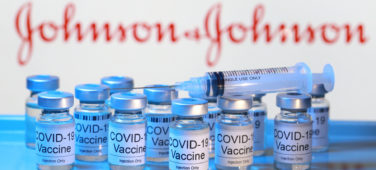Although we now have the first-ever RNA vaccines in our hands to help prevent the spread of COVID-19, it may not be enough to fully contain this pandemic and many of us may get sick before we receive it. Naturally, if we happen to be exposed, we will reach for the best respiratory product we can find. But where should we look?
While there is currently no cure, science does offer some hope. State-of-the-art technologies are being used to study everything there is to know about COVID-19, considering we started out knowing so little. We now know, for example that the virus is more easily spread through air than through surfaces. But to prevent the next pandemic and to further curb this one, scientists believe we need to focus on the respiratory system. Vaccines make our bodies create antibodies, a powerful part of our immune system found in our blood. Another, often overlooked part of our immune system rests in our respiratory system. Researchers in this area are using technologies such as nasal tissues made from stem cells and engineered mucus-carrying air droplets to advance our understanding of this system and the decades-old respiratory disease drug category far and above what has been available so far.
Can Common Cough and Cold Medications Fight COVID?
Common cough and cold over-the-counter (OTC) products contain the same handful of ingredients—acetaminophen, dextromethorphan, phenol, guaifenesin, and phenylephrine HCl—which you may recognize as Delsym, Robitussin, Chloraseptic, Theraflu, and Mucinex. These medications were approved decades ago. They were based on the science that was available at that time, and mainly focused on masking symptoms. Even today, little is known about what these ingredients actually do to the body’s mucosal membranes.
Mucosal membranes line the nose and throat and act as a barrier between our bodies and the outside world. They essentially keep SARS-CoV-2 and other airborne viruses out of our lungs. In “asymptomatic” people, for example, COVID-19 tests can detect viruses in the nose and mouth. These people are successfully keeping the virus out of their lungs where the disease could rapidly worsen. So strong mucosal immunity is key, and until there is a cure, we should look for products that fortify this natural, protective barrier.
New technologies are helping scientists genuinely understand how upper respiratory (nose and throat) membranes respond to infection. For example, my company, Applied Biological Laboratories, worked in partnership with other leading laboratories to reproduce human nasal and throat tissues in order to examine how respiratory diseases progress. Additionally, we were able to examine how respiratory tissues are actually affected by common OTC medications.
We studied human respiratory tissues that were stimulated with a molecule called bradykinin—it is one of the body’s first inflammatory signals following an upper respiratory infection. When leading OTC products were tested, they did nothing to stop the inflammation, and actually worsened it. More information about the study is available here.
More Advancements in the Study of Respiratory Disease
Other promising technologies are also in the works and sure to advance the field of respiratory disease. In November, Dr. Michael Russell, a microbiology and immunology expert at the State University of New York at Buffalo, published a paper in Frontiers in Immunology. In the paper, Dr. Russell and his colleagues argue that the mucosal immune system is by far the largest component of the immune system and should receive far more attention than it does. In a press release about the paper, he stated that the mucosal system has evolved to protect us and is “where the great majority of infections arise.”
This further highlighted the need for both new science and a new, more in-depth examination of the complexities of the human nose and throat.
Furthermore, other researchers, such as Jessica R. Kramer, a biomedical engineer and assistant professor at the University of Utah, are examining the impact mucus plays in transferring coronaviruses from person to person. She and her team have created different forms of synthetic mucins—the proteins that make up mucus—to examine how they interact and spread COVID-19; specifically they are looking at what happens when mucus droplets containing the virus land on surfaces, and how much mucin composition on the next victim’s mouth, eyes, or lungs affects whether the virus makes it through the mucus into their cells to replicate.
While the COVID-19 pandemic has resulted in many scientists, researchers, and medical professionals recalibrating their focus areas, the virus has also shed light on the outdated science many of our remedies and treatments for other diseases—such as cold, sore throat, and cough—are based on today.








